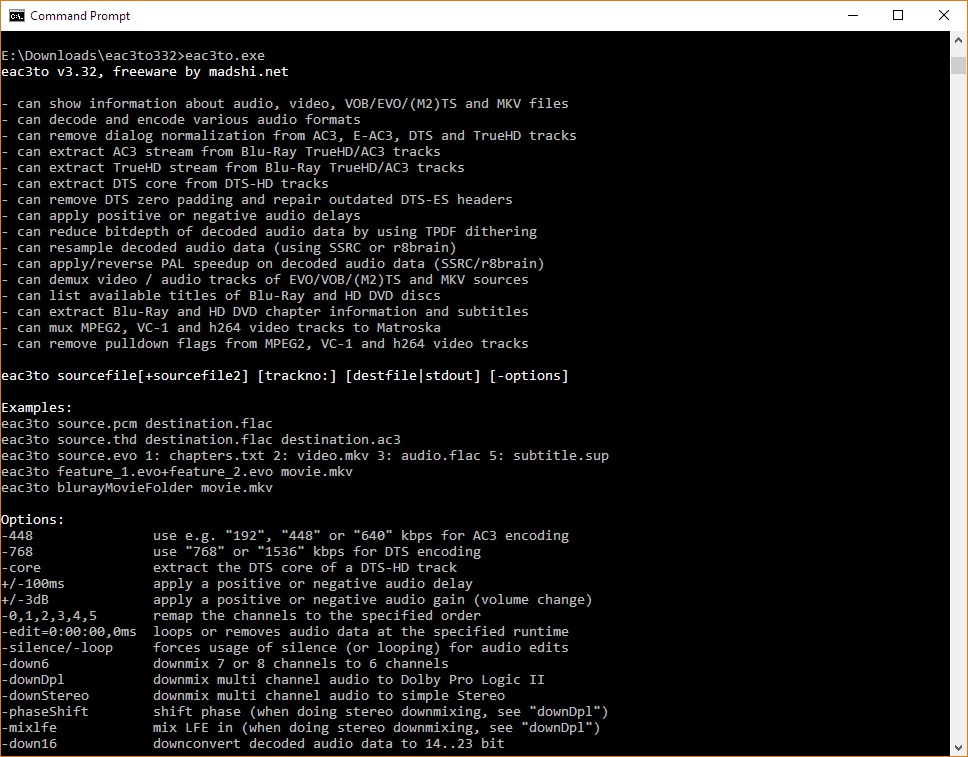
The downside? It is less common neither Amazon Prime Video nor Netflix currently support DTS:X. You can also manually adjust sound objects, meaning you can crank up the volume of voices on a soundtrack making it easier to hear dialogue over loud effects.Īround 90 per cent of the home AV industry supports DTS:X, with many manufacturers either releasing firmware updates for existing receivers, or launching new models. It works with standard surround sound set-ups and doesn't require extra overhead speakers.
DTS DECODER FOO TV
TV broadcasters such as Sky and BT are increasingly supporting Atmos, too.ĭTS:X is a bit more flexible. You can find Dolby Atmos products from an increasing number of hardware manufacturers, as well as across Blu-ray discs and streaming services, including Amazon Prime Video, Netflix and Disney+. LG's OLED TVs over the past years also support Atmos, while the 2021 Panasonic JZ2000 4K OLED TV (and some of the company's older flagship TVs) has its own upward-firing Dolby Atmos speakers built into the rear of the set.
DTS DECODER FOO DRIVERS
Not keen to cut holes in your ceiling? There's a range of simpler options, such as Dolby Atmos soundbars with upfiring drivers that bounce the sound off the ceiling to similar effect, or – better yet – upfiring modules that can sit on top of your traditional speakers. They recreate object-based effects, such as a plane flying overhead or bullets zinging around the room, thanks to multiple audio signals aimed at set-ups with a greater number of speakers than the standard 5.1.Īgain, both should create an immersive experience, but there are some crucial differences between the two.ĭolby Atmos uses speakers placed in the ceiling to create a 'bubble' of sound. These top-of-the-line, cutting-edge home cinema audio technologies from Dolby and DTS are a step up from traditional surround sound. (Image credit: Dolby) DTS:X vs Dolby Atmos
Ultimately, you can expect a fine home cinema experience from both, and often your choice of soundtrack will come down to whichever is supported by your source material. Dolby argues that its codecs are more efficient than DTS codecs, and thus can sound every bit as good or better, even at a lower bit-rate. In theory, less compression during encoding equals more detailed audio that delivers a soundtrack closer to what was originally intended.Ĭase closed, then? Not so fast.
DTS DECODER FOO PLUS
Dolby Digital Plus supports up to 1.7Mbps, while DTS-HD High Resolution supports up to 6Mb/s. The compression gap widens when you step up to the competing HD formats. For DVD discs, it supports up to 768 kbits/s. For DVD discs, it supports a slightly lower bit-rate: up to 448 kbits/s.ĭTS, on the other hand, is less compressed and supports higher bit-rates of up to 1.5Mb/s (megabits per second). Dolby Digital compresses 5.1 digital audio down to a bit-rate of 640 kbits/s (kilobits per second) for Blu-ray discs. The major differences are the compression levels and bit-rates.

What is the difference between DTS and Dolby Digital?ĭolby Digital and DTS can both deliver fantastic surround sound experiences – but there are some key differences in the way that they achieve that end result. There is also DTS:X, which competes with Dolby's Atmos. DTS has also brought out a lossless format, DTS-HD Master Audio.

Like Dolby Digital, DTS has since released a plethora of more advanced surround sound formats including DTS-HD High Resolution, which supports up to 7.1 speaker channels. The company might not be as well known as its main rival, but many purists believe that DTS offers better sound quality because it encodes audio at higher bit-rates. In 1996, DTS began cropping up in consumer hardware. The company got its big break when Steven Spielberg chose DTS for his dino-romp, Jurassic Park. What is DTS?ĭTS (originally Digital Theater Systems) was founded in 1993 to compete with Dolby Labs for surround sound supremacy. Then there's the object-based audio system you'll no doubt have heard of – Dolby Atmos.
DTS DECODER FOO MOVIE
Want the best? Dolby TrueHD is a lossless format that promises to be identical to the movie studio's master recording.

Since then, Dolby has released a slew of increasingly advanced codecs, including Dolby Digital Plus, which supports HD surround sound and up to 7.1 speaker channels. The first film to use Dolby Digital was Batman Returns in 1992.


 0 kommentar(er)
0 kommentar(er)
